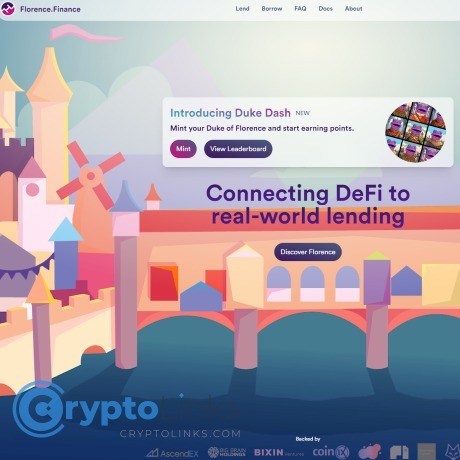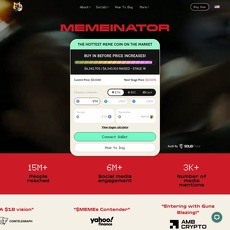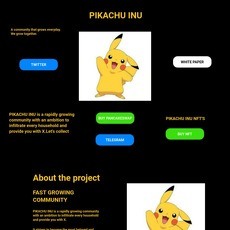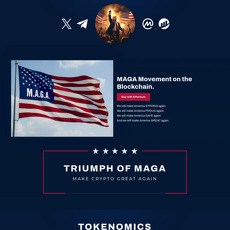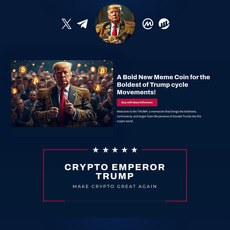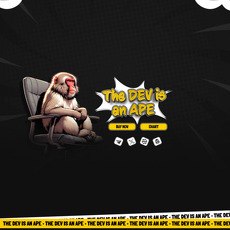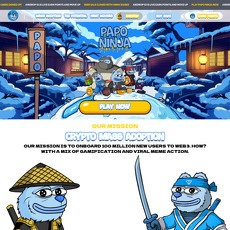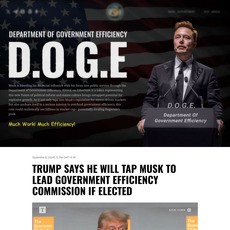Florence Finance Medici Review
Florence Finance Medici
florence.finance
If your website is on the scam list and you think that you are not a scammer, contact us. After you provide us with all the proof that you are in Crypto World with good intentions, we will delist you. Usually, you get in this category because you are hiding your team, you have a bad reputation(you are tricking, deceiving, scamming people), and you haven't got a written project whitepaper or is a shitty one....
Their Official site text:
The Basic
Concept
2
The Story
Of Finding,
Founding and
Funding
How about a brief
interlude on how
our brand got its
name to lighten up
on the engineering
talk? We’ll let you
in on what (or
rather: who) lead us
to our noble aim of
pioneering the
market with
something truly
new.
What most people know is that during the
Renaissance period, Florence was the hub of
immense cultural change and great innovation in Europe. And the name that immediately
pops up in that context is Medici. Over time,
the Medici family actually collected so many
prominent representatives that it’s not easy
to tell them apart. Here’s one: Giovanni de’
Medici. He opened the first of the family’s
banks more than 600 years ago.
So, we’re talking money. Handling it, saving
it, lending it. Ground-breaking innovations
such as double-entry bookkeeping or the
issuing of letters of credit were pioneered by
the Medici dynasty and are still present in
our modern financial system. Lower-classborn, they first had to make their way up the
social ladder, find the right friends and get
married strategically in order to finally become
influential beyond legendary.
Why are you reading this again?
Interestingly enough, trial and error must
have been their constant companion. And we
thought: who needs noble blood if you can
be an esteemed pioneer?
(Modesty is not our forte.) So, if we set up
a team of topic experts, smart thinkers and
diligent executives, we can contribute
our inventiveness to a growing, truly futureforward market. There had to be some
wisdom we could derive from the peculiar
kind of Medici business acumen.
Did the Medici invent the banking?
Of course not. But did they run the most
popular bank of their time? Most definitely.
Bottom-line? The Medici pioneered in
rewriting the rules – and we’re here to do the
same.
With brave new endeavours, it always comes down to the essentials.
Drive. Leadership. Goals. And the necessary proof to know you’re on the right track.
“Italians were eating with a knife and fork when the French were still eating each other. The Medici
family had to bring their Tuscan cooks up there so they could make something edible.”
– Mario Batali
Just like it has always been a driving force, innovation is imperative
to our business:
“Almost a decade after Lehman Brothers collapsed
and the financial crisis took hold, small firms are
still struggling to access credit in many industrialised countries. Business surveys repeatedly point
to relatively high bank loan rejection rates for
SMEs, as well as financing shortfalls for those small
firms whose applications are accepted. Lending
data and credit condition surveys suggest banks
have treated larger corporate customers more
favourably in the volumes they lend, and the
terms and conditions they impose, since 2007/08.
However, technology and other factors have
triggered growth in a number of other providers
of credit, offering small businesses an alternative
to their traditional dependence on bank loans.”
(Oxford Economics, 2018)
SME Lending:
The “Real Deal”
3
4
Here come some exciting facts that will
help you wrap your head around the
immense potential there actually is in
DeFi. Right now, it’s going through the
proverbial roof.
The amount currently locked in DeFi has grown
to a 3-digit billion Dollar amount over the last few
years. This amount is called TVL, total value
locked. The sheer incredibility of this fact can
only be displayed by drawing a comparison: in
early 2020 there was “merely” one digit in its place.
This rapid growth is likely attributed to the high
DeFi returns on offer. Over the past year, we’ve
witnessed yields ranging anywhere from less than
5% to more than 2,500%.
Such yields are of course highly dependent on positive
momentum within the cryptocurrency market,
intelligent yield-farming strategies and a pretty
large appetite for risk. Therefore, they are unlikely
to be sustained indefinitely. But that’s a different
story.
A lot of the DeFi borrowing to date was geared at
increasing leverage to fuel the trading in cryptocurrencies even further. At first, the value of loans
actually being used to fund transactions outside
of the cryptocurrency space was estimated to be
relatively insignificant. That however, is “so last
year” – due to the advent of stablecoins. They’ve
become real game-changer as they’re being used
increasingly for real-world transactions.
Currently, the market is registering a significant
decrease in lending rates. Annual Percentage
Yields (APYs) tend to fall, too, whenever the
cryptocurrency market turns bearish.
The State of
Things
$300 b
$200 b
$100 b
$0 b
1 Jan 2019 1 Jan 2020 1 Jan 2021 1 Jan 2022
DeFi has grown from nearly zero
to over $100 billion in less than two years.
Total Value
Locked (TVL)
in DeFi
©2022 Andreessen Horowitz. All rights reserved worldwirde.
Source: DeFi Llama data is as of 05/12/2022
5
How about an easier, ready-made liquidity transformation between crypto and real-world loans?
Wouldn’t this be attractive to crypto holders –
having real-world yields brought to them?
We think it’s a viable incentive to either hold on or
switch to crypto altogether. Diversifying away
from crypto-specific risk and market volatility,
and towards more stable yield potential.
Our protocol creates an opportunity for lenders
and borrowers to engage with one another in a
way that’s mutually beneficial. In terms of concerns and goals, lenders seek to earn yield on the
capital they’ve invested. Borrowers, on the other
hand, want to receive funding for their enterprise.
So far so good. In order to get said funding from
the protocol, however, a borrower needs to submit a credit proposal which includes information
about the type of credit, collateralisation, yield,
intended purpose and other relevant information.
In other words: we need to know the whys, hows
and whats.
And after the credit proposal is submitted, it will
be evaluated and voted on by the governance of
the protocol. If all goes well, the credit proposal
will be turned into a loan or an entire lending
pool.
The Protocol:
Transparent by
Design
6
But what is a lending pool?
A lending pool is essentially an on-chain
manifestation of a credit agreement. The
lending pool’s parameters have been derived
directly from the credit agreement.
Like this, the borrower is able to mint lendingpool tokens within that pool’s particular rule
set. Those tokens are actually pretty special:
each lending pool has its own unique lendingpool token. Besides, with it come its specific
means of exchange. The next step consists of
either selling, buying or holding.
How do I get there?
And what’s in it for me?
First off, here’s how the selling part works:
In order to receive the desired funding, the
borrower has to sell the lending-pool tokens
to what would be (whitelisted) lenders. Ergo,
the buying part works the other way around:
A lender who wants to be part of a particular
lending pool must buy the designated tokens.
And here comes the result: By holding and
staking pool tokens, you can build up rewards
for yourself. And of course, you can go and
claim those rewards from the corresponding
staking pool.
Now, here’s a little extra – the Florence protocol distributes two kinds of rewards:
the first kind is based on the real-world yield
(yes, the amount generated by the borrower)
and is paid out in EURS. The second kind
is an additional option which we’ve come
up with and it’s contributed by the protocol
itself. Give it up for the MDC, our very own
Medici token!
Did you know
that the Medici
arranged for people
who contributed to
building St. Peter’s
Basilica to be
absolved of their
sins in exchange
for money. Sounds
quite like our
rewards, right?
7
The lending-pool tokens are justifiably
the centrepiece of the Florence protocol.
Lending, borrowing, principal repayment
and reward distribution are all taken
care of through the exchange or holding
of lending pool tokens.
The most important factor here is transparency:
lending-pool tokens are traded against EURS in a
normal “order book”. This has one major advantage:
lenders and borrowers can follow and react to each
other’s funding needs and capabilities transparently.
To understand our approach better, the following
FAQ cases have to be considered:
• If you want to enter a lending pool, you have
to exchange EURS for lending-pool tokens.
• If you want to increase your existing position
in a lending pool, you also exchange EURS for
tokens. Decreasing your position, by the way,
works exactly the same, only you exchange
tokens for EURS.
• Whenever you want to opt out, you swap
lending-pool tokens for EURS, too.
• If you are a borrower and want to borrow
funds, however, you need to sell lending-pool
tokens. In order to be able to do that, you
mint them from the lending pool first – for
EURS. Those EURS you can use to fund your
enterprise.
• If you have received funding and want to start
paying back the amount you borrowed, just buy
lending-pool tokens with EURS.
To sum up, tokens are basically like a
gateway between real-world and crypto
entities.
Another important rule: real-world loans are illiquid
(not readily available). A lender can’t prematurely
exit a lending pool – unless there is another
lender willing to take their position and buy their
lending-pool tokens from them. Of course, our
concept seeks to provide as much flexibility as
possible to lenders. This is where the MDC token
comes into play.
No hands-on liquidity, no working system.
That’s a fact. Hence, in order to keep the show on
the road, our protocol incentivises the provision
of EURS liquidity – the incentive being the MDC
token. But how do we avoid excess liquidity?
Here comes a part of the system that’s as vital as
it’s clever: the amount of EURS liquidity is limited.
In other words, the value of MDC is directly
coupled to the protocol’s success and growth.
Our idea comes down to one specific mechanism:
the more value is being lent through the protocol,
the more buy pressure there will be for MDC on
the open market. The supply of MDC is capped
from the get-go – the growth of our protocol is
not. Bottom line: The limit is set by our ambition
only.
The Heart of
Florence
11
The protocol – the way it is set up right
now – is merely the first step and can
virtually be expanded in any direction.
Possible changes depend on factors
such as the regulatory climate in the
EU, the overall adoption of blockchain
technology or a fluctuation of our available resources. In terms of expansion,
we’ve been thinking about the following
possible future scenarios. We’re listing
the points considered according to their
feasibility from medium- to long-term
approaches.
Governance
First off, MDC token holders will be able to vote
on governance proposals and also make their
own. But what does governance mean in a DeFi
context? As any and all transactions are recorded
on the blockchain, they’re shared with all of the
participants. Decentralisation is key here because
each user is allowed to vote on the proposed
change and can read about or discuss its benefits
and drawbacks. The governance is decentralised
because it always relies on the community for
collective decision-making and an extraordinarily
quick turnaround time (compared to TradFi or
any operations in the “traditional” sense) when
changes are supposed to happen.
Our seamless protocol integration
We think that in the way we want to work and
succeed, it’s key to maximise the transparency
between lenders and borrowers. So, in order to
do so, the protocol needs to be extended in a way
that allows borrowers to automatically publish
information that concerns their collateral.
Our legal structure
Sounds like a major step – but what is a DAO
anyway? It may sound like a term from 1992’s
Mortal Kombat, but it’s actually just short for
“Decentralised Autonomous Organisation”, which
basically means a software that runs on-chain
and offers its users a built-in model for the collective management of its code. It mainly differs
from TradFi structures in that it isn’t managed by
boards, committees or executives.
With our protocol, we want to straddle DeFi and
real-world asset financing – that’s a given. But
it’s unclear whether a DAO metamorphosis will
ultimately serve our purpose in the best way. Our
main argument regarding the decentralisation
and democratisation of finance is to make it less
fragile. So, being able to structure the entity as a
DAO in the future would be a most pragmatic and
transparent step. While we’re still in the process
of growing and establishing the company, it
would serve as the most beneficial legal structure
and regulatory framework for us.
Our international expansion
We started in north-western Europe as it’s the
established play area of most founding-team
members. We’re also most comfortable with the
regulatory framework there. However, we see no
inherent reason to limit ourselves to the European
Union going forward: our geographic expansion
into international regions and jurisdictions may
well be an important driver of growth in the future.
The Future
12
Our own EUR-denominated stablecoin
USD stablecoins have been really successful over
the past years. Be that as it may, their European
counterparts – various EUR-denominated stablecoins – have neither been as prevalent nor as
successful regarding the markets. We believe that
there’s a number of factors to the why. The ruling
negative-interest-rate environment seems to be
the most dominant argument while there are
regulatory and jurisdictional hurdles, too.
In order to tackle the issue of negative sovereign
rates, we would have to build a lending business
to issue a EUR-denominated stablecoin. And this
is exactly what we’re aiming at: issuing a Florence
Finance stablecoin through becoming a lending
business ourselves. While there’s plenty of competition, there’s also plenty of room in the European market for new players.
Our DeFi ecosystem integration
Innovation-driven intentions and future-forward
theories should always have their place. And so,
composability is an approach we strongly believe in
at Florence Finance. After its launch, our protocol is
open to integration into existing spheres. We’re
exploring potential alliances with established
projects such as MakerDAO, Compound or AAVE.
Cutting up the pie would be even more fun,
wouldn’t it?
Besides, it also leads to an increase in diversity, so
here’s what we’re going for:
• Lending-pool tokens: We’d like to see them
available on secondary markets or with
aggregators.
• Other protocols: If fellow protocols started
accepting our lending-pool tokens as collateral, it would mean the proverbial giant leap
for us. If other protocols integrated access
to our lending pools in order to network
efficiently, we’d grow much faster. In turn,
Florence Finance could start setting up the
necessary facilities to accept currencies from
other protocols.

